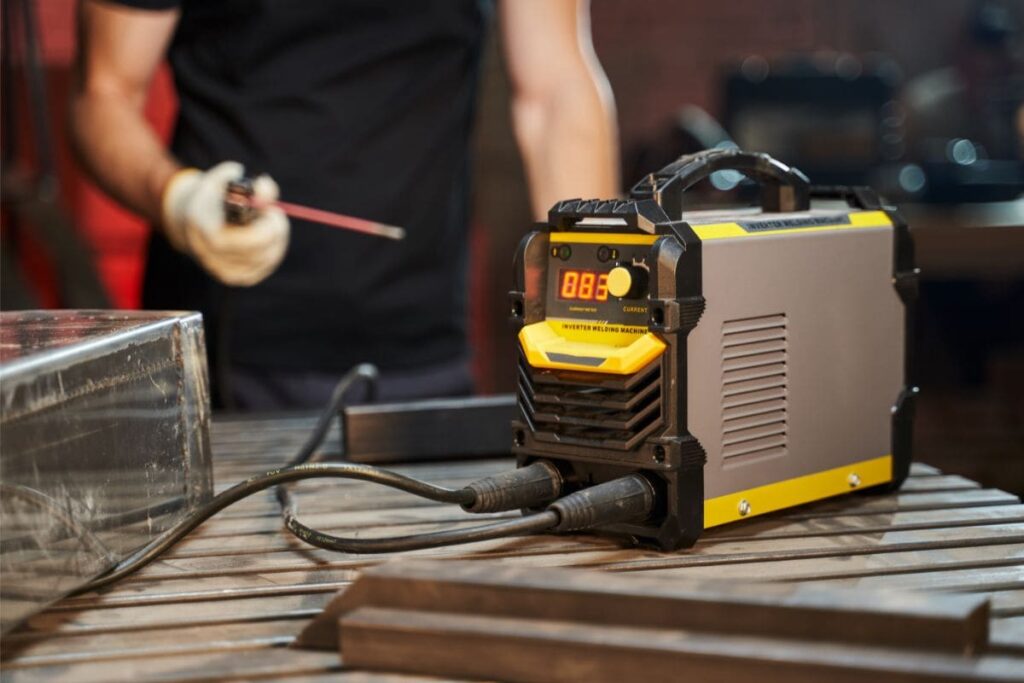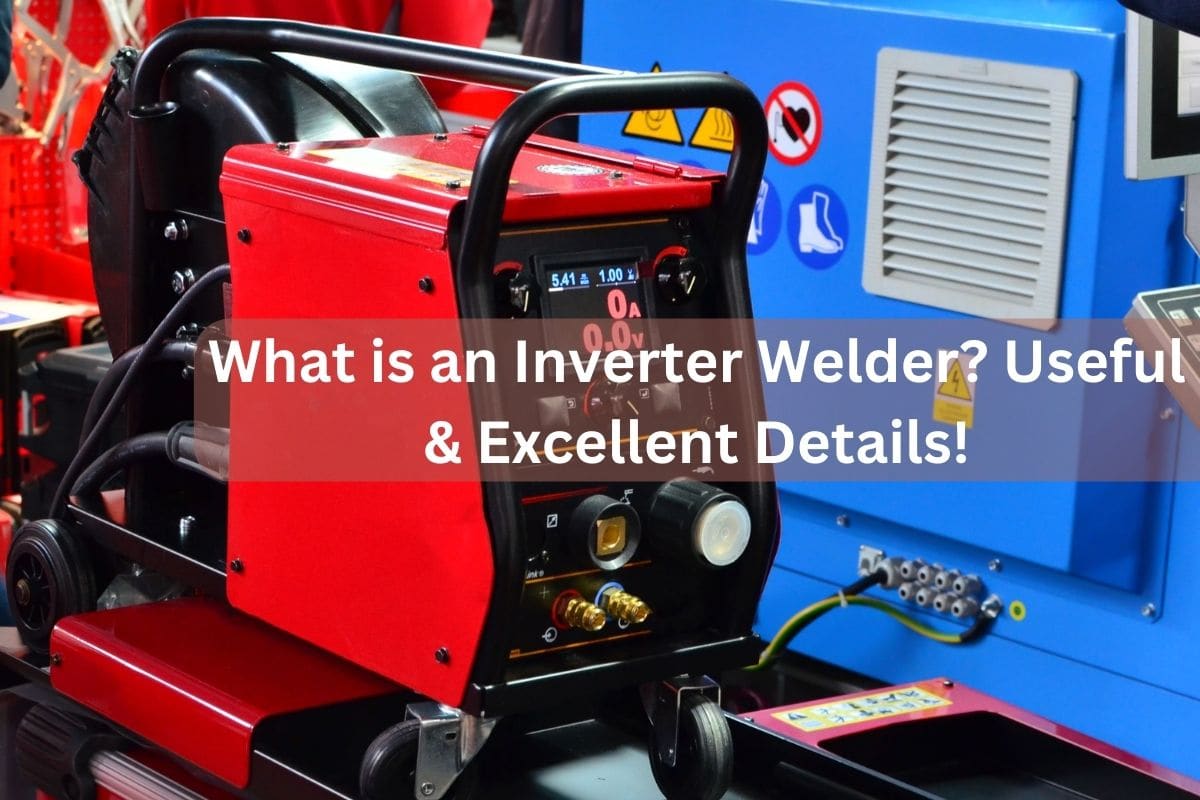Inverter Welders are revolutionizing the welding world with their advanced technology and unmatched versatility.
Whether you’re an experienced welder or just diving into the craft, understanding these machines is crucial.
Join us as we delve deep into the world of Inverter Welders, uncovering their benefits, potential challenges, and invaluable tips for optimal use.
What Exactly is an Inverter Welder?
An Inverter Welder is not just any ordinary welding device. Primarily used for diverse welding styles like TIG or MIG, its unique feature is the utilization of advanced silicon technology.
This technology allows it to control the welding process electronically, transitioning seamlessly from AC to DC current and vice versa. The result? A lightweight, versatile, and efficient machine.
Imagine a welder that’s not only compact but offers optimal control over every aspect of your welding. That’s the Inverter Welder for you.
How Do Inverter Welders Work?
- From High Voltage to Welding Arc
Every Inverter Welder journey begins with a high DC voltage ranging from 110V to 240V. This voltage is then converted to AC. But the magic doesn’t stop there.
Its frequency gets a massive boost from the usual 50 Hz to a whopping range of 10,000 Hz to 30,000 Hz.
The result is a conversion back to a stable DC voltage output, perfect for the welding arc.
- The Inverter Technology
Ever wondered about the science behind it? Inverter welders, in essence, manage voltage.
They adeptly convert the AC power supply into a much more usable output voltage.
But unlike their traditional counterparts that rely on large transformers, these machines use sophisticated electronic components for power conversion.
They have the incredible ability to elevate the primary power supply frequency from the typical 50Hz to an astonishing 20,000 – 100,000Hz. This remarkable trait significantly cuts down on the transformer size.
Read Also : Welding Transformer: Important Tap Settings Guide
Why Should You Consider an Inverter Welder?
The Pros
Inverter Welders come with a plethora of advantages:
- Compact Design
The Inverter Welder has revolutionized the welding industry with its surprisingly compact form.
Unlike traditional welding machines that can be cumbersome and heavy, these devices are incredibly lightweight, making transportation and storage a breeze.
It’s a game-changer for professionals who often need to move their equipment from one location to another.
- Sky-high Efficiency
Efficiency in any device translates to cost and energy savings, and the Inverter Welder is no exception.
With an efficiency rating between 80% to 90%, they outperform conventional welding machines that often hover around a 50% efficiency mark.
This means less power consumption for the same amount of work, benefitting both the user and the environment.
- Diverse Capabilities
Flexibility in a tool is always an added advantage. Inverter Welders stand out because of their ability to handle a myriad of welding methods.
Whether you’re looking to work with stick, TIG, or MIG, this device has got you covered, eliminating the need for multiple machines.
- Superior Arc Control
One of the challenges in welding is ensuring stable welds, and this is where the Inverter Welder shines.
It provides exceptional control over the electric arc, ensuring that welds are not only stable but also of high quality. This precision is vital for projects that demand perfection.
- Electrode Flexibility
Every welding job can have its own requirements in terms of electrodes. The Inverter Welder’s ability to switch between AC to DC means it can work with a vast array of electrodes. This adaptability makes it a favorite among professionals who often work on varied projects.
- Enhanced Duty Cycle
Time is of the essence in any project. With a higher duty cycle, Inverter Welders allow users to weld for extended periods without the machine overheating or needing a break. This continuity is particularly beneficial for large projects that demand long welding sessions.
- Minimal Power Consumption
Energy efficiency is more crucial today than ever before. Inverter Welders, despite their power, are designed to consume less electricity.
Their ability to run on regular household current without draining excessive power makes them both eco-friendly and pocket-friendly.
- Cooling Features
Welding machines, given their intense operation, can become quite hot. But the Inverter Welder is a step ahead.
It comes equipped with integrated cooling fans, ensuring the machine’s longevity by actively preventing overheating. This feature not only prolongs the device’s life but also ensures safety during operations.
Read Also : Butt Weld vs Socket Weld: Outstanding Differences Detailed
The Cons
However, like all things, they do come with a few drawbacks:
- Unreliable Cheap Models
Like any technological product, Inverter Welders come in a wide range of qualities.
While the premium models are designed to last and perform efficiently, the market is not without its share of cheap, unreliable versions.
These low-cost models might seem tempting initially, but they often compromise on durability and performance, leading to potential disappointments down the line.
- Steeper Repair Costs
The intricate design and advanced technology that make Inverter Welders so desirable also come with a drawback.
If something goes wrong, repairing these machines can be notably more expensive than fixing traditional welding devices.
This is due to the specialized components and expertise required to address issues in their advanced electronic systems.
- Durability Concerns in Harsh Environments
While Inverter Welders are marvels of modern technology, they might be slightly more sensitive to extremely harsh environments compared to their conventional counterparts.
Their electronic components can be susceptible to damage when exposed to extreme conditions, making them less rugged in some scenarios.
Users need to exercise caution and ensure they’re used in appropriate settings to maximize their lifespan.
By understanding these potential drawbacks, users can make informed decisions and take measures to extend the life and efficiency of their Inverter Welders.

Tips for Using an Inverter Welding Machine
Navigating Inverter Welding Machines can initially seem daunting. But with the right guidelines, you can achieve top-notch results every time.
Whether you’re a beginner or a seasoned welder, these tips will enhance your welding experience. Dive in to optimize your technique.
- Always start by connecting the welder to an electric socket, ensuring all connections are secure.
- Before beginning, inspect and clean the welding gun tip.
- Safety first! Don your protective equipment.
- Adjust the settings as per your requirements.
- Prepping the workpieces is crucial for a smooth welding process.
- Weld by moving the device uniformly along the joint. No rush!
- After welding, a little filing and grinding can give your joint a polished look.
Unraveling the AC/DC Mystery
One question many ponder over is the choice between AC and DC outputs. Traditional welding machines typically use AC input but provide DC output.
However, with advancements, some modern inverter welders boast both AC and DC outputs, offering even more versatility.
Read Also : AC vs DC Welding: Which is the Best Fit for Your Needs?
How Long Can You Expect Your Inverter Welder to Last?
On average, an Inverter Welder has a lifespan of 5 to 6 years. But here’s a tip: proper maintenance and storage can make a significant difference. So, ensure regular upkeep and store it in optimal conditions to maximize its life.
The Multifaceted Applications
Thanks to advancements like IGBT and mosafet, Inverter Welders can tackle both stainless steel and iron welding tasks with ease. They’re versatile, finding their place in household item repairs, construction projects, and large-scale industrial welding.
Read Also : What is a Fillet Weld? Impressive Details You Need
Conclusion
The Inverter Welder has undoubtedly reshaped the welding landscape. With its compact design, unparalleled efficiency, and multi-process capabilities, it’s a valuable addition to any welder’s toolkit.
Whether you’re just starting or a seasoned expert, it’s worth exploring what this machine has to offer. Got an experience or a tip about using an Inverter Welder? Share in the comments below. We’d love to hear from you!


